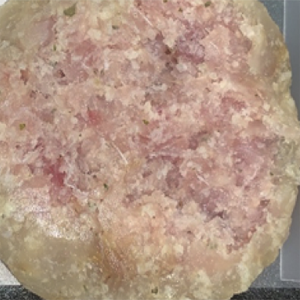Effect of novel active packaging containing antimicrobial peptide on the shelf-life of fish burgers (Coryphaena hippurus) during refrigerated storage

Accepted: 7 August 2022
HTML: 31
All claims expressed in this article are solely those of the authors and do not necessarily represent those of their affiliated organizations, or those of the publisher, the editors and the reviewers. Any product that may be evaluated in this article or claim that may be made by its manufacturer is not guaranteed or endorsed by the publisher.
Authors
Fresh fishery products are highly perishable foods mainly due to their high-water content and high level of pH which act as promoters of spoilage processes. In these matrices, the deterioration phenomena are the result of the action of oxidative, and enzymatic processes due in part to the presence of specific microorganisms. Indeed, the microbial communities responsible for spoilage are a small fraction of the flora detectable in the fish and are known as specific spoilage organisms (SSOs). In the last decades, the scientific community has worked to achieve the ambitious goal of reducing the impact of microbial deterioration on food losses through innovative solutions, including antimicrobial packaging. The goal of this study was to evaluate the efficacy of an active polypropylene (PP)- based packaging functionalized with the antimicrobial peptide 1018K6 to extend the shelf life of dolphinfish burgers (Coryphaena hippurus) by evaluating its effect on sensorial and microbiological profile. The microbiological results showed an evident antimicrobial activity of the active packaging against hygiene indicator microorganisms and SSOs, recording a reduction of about 1 Log (CFU/g) of their concentrations compared to those of the control groups. Furthermore, a significant influence of functionalized packaging on the organoleptic characteristics was noted, accentuating the differences in freshness between the two experimental groups. This work confirmed the hypothesis of considering antimicrobial packaging as a potential tool capable of slowing down surface microbial replication and, therefore, extending the shelf-life and improving the health and hygiene aspect of fresh fish products.
How to Cite
PAGEPress has chosen to apply the Creative Commons Attribution NonCommercial 4.0 International License (CC BY-NC 4.0) to all manuscripts to be published.
Similar Articles
- Maged A. Al-Garadi, Rasha N. Aziz, Dhary Alewy Almashhadany, Dheyazan M. Ali Al Qabili, Abdulmunem Dherar Abdullah Aljoborey, Validity of cold storage and heat treatment on the deactivation of Vibrio parahaemolyticus isolated from fish meat markets , Italian Journal of Food Safety: Vol. 13 No. 1 (2024)
You may also start an advanced similarity search for this article.

 https://doi.org/10.4081/ijfs.2022.10466
https://doi.org/10.4081/ijfs.2022.10466



